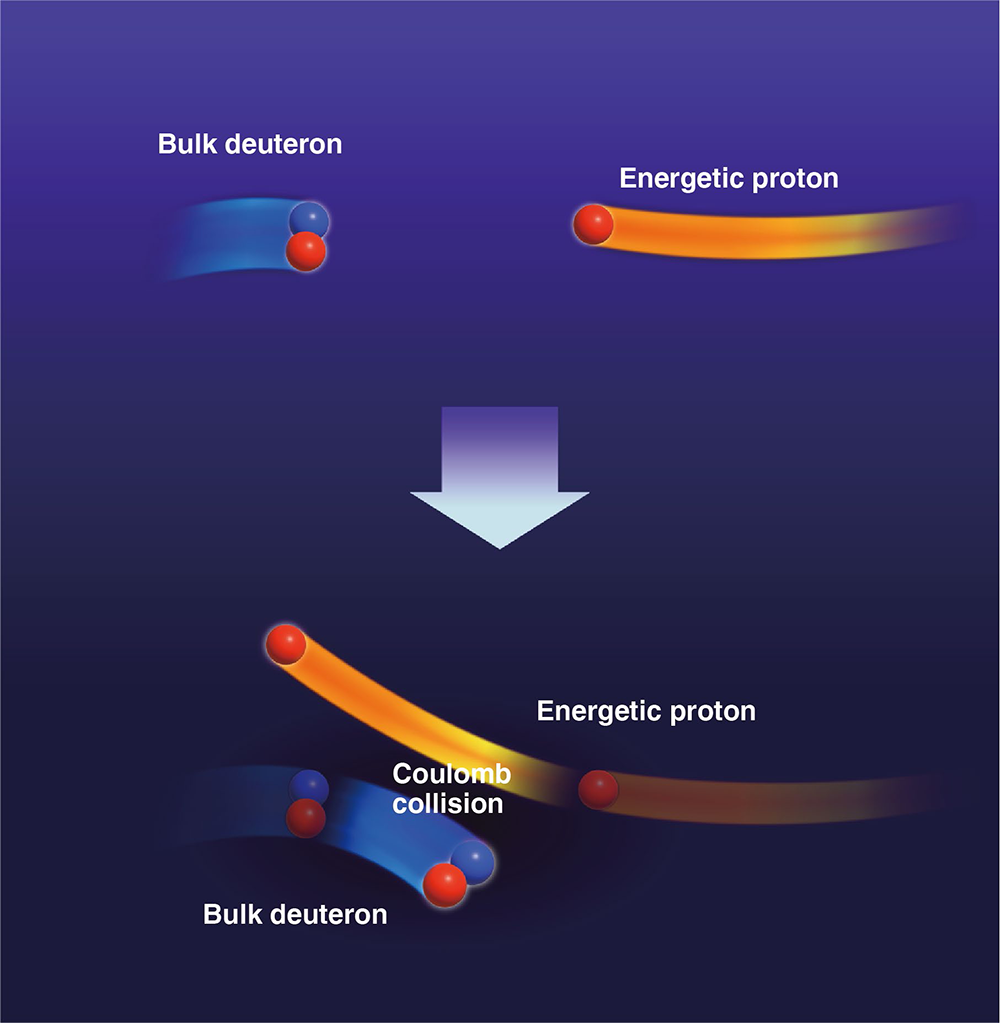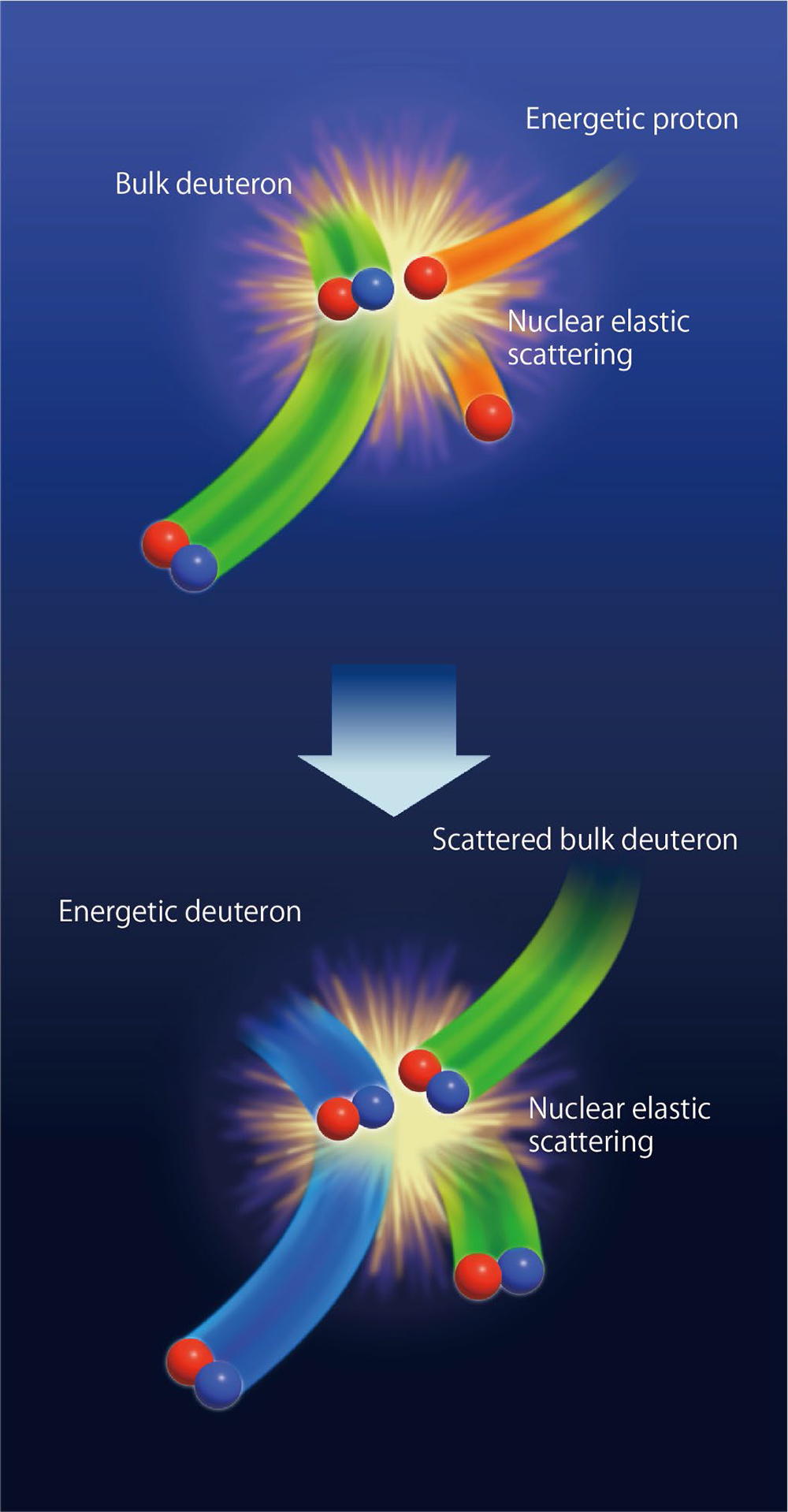Observation of energy transfer due to nuclear elastic scattering
We observe an energy transfer from beam protons to beam deuterons due to a nuclear force by analyzing the neutron emission rate and decay time in LHD deuterium plasmas injected with hydrogen and deuterium beams, and comparing them with numerical simulations developed at Kyushu University. We provide important knowledge that will lead to improved power generation efficiency in fusion reactors.
 |
 |
Coulomb scattering is usually regarded as the dominant process in the ion collisions in a fusion plasma. However, as the energy of the ions increases, the 'nuclear force' causing elastic scattering becomes non-negligible. Coulomb scattering has a small angle and a small energy transfer per collision, whereas nuclear elastic scattering has a large angle and a large energy transfer per collision. Nuclear elastic scattering has the effect of enhancing ion heating and changing the distribution function of ions, which is expected to improve fusion reactivity in future fusion reactors
In the LHD deuterium plasma experiments, the research group injected deuterium and hydrogen beams simultaneously into the deuterium plasma and analyzed the neutron emission rate and decay time. The neutrons were mainly due to the reaction between bulk deuterons and energetic deuterons. The decay time of the neutron emission rate reflected the change in the velocity distribution of the energetic deuterons. The decay time of the neutron emission rate obtained in the experiment was longer than that predicted by the numerical simulation, considering only Coulomb scattering. Energy transfer between energetic ions cannot be explained only by the Coulomb scattering process. To understand the energy transfer between energetic ions, a numerical analysis was carried out using a Boltzmann-Fokker-Planck simulation, in which a Boltzmann collision term describing nucleoplasmic scattering was added to the Fokker-Planck model, which analyses the distribution function of the plasma. The results show that energy is transferred from the energetic protons to the energetic deuterons via the bulk deuterons. Since nuclear elastic scattering has a large energy transfer per collision, that by nuclear elastic scattering becomes equivalent to the energy transfer by Coulomb scattering. This result might provide an important insight into the efficiency of power generation in future fusion reactors.
The research was carried out by a group from Associate Professor Hideaki Matsuura's laboratory at Kyushu University, in collaboration with Associate Professor Kunio Ogawa and Professor Mitsutaka Isobe of the National Institute for Fusion Science.
The results of this research were published on 12 September 2022 in Physics of Plasmas, a journal of the American Institute of Physics.
